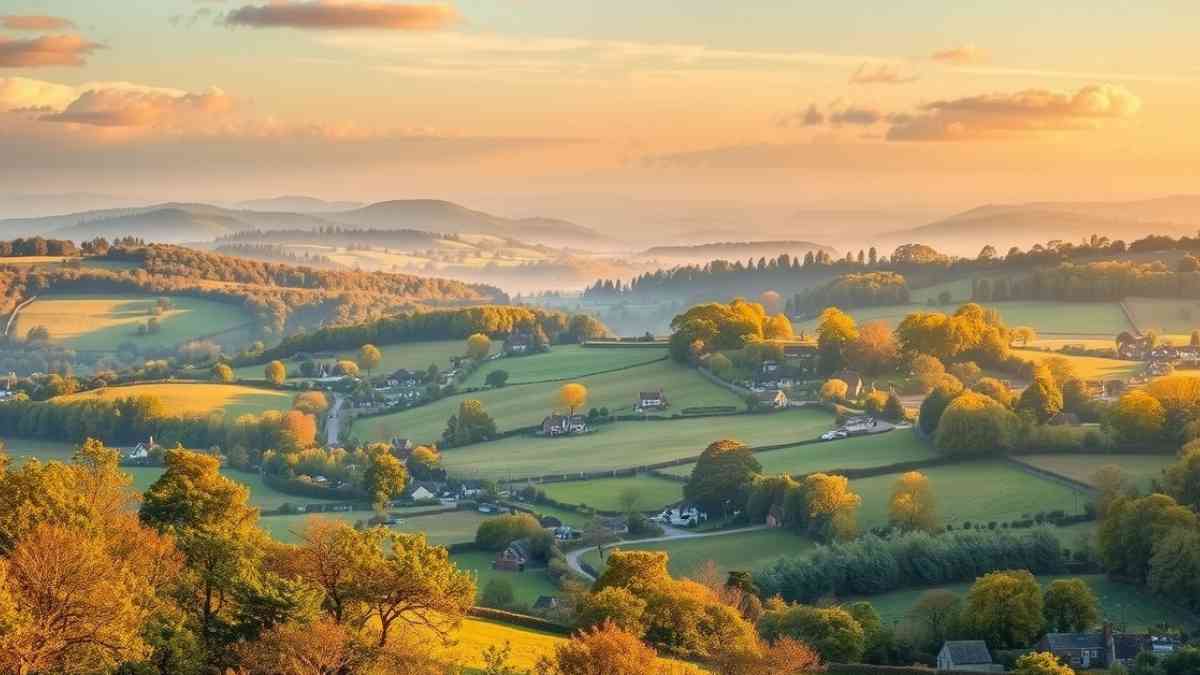High Weald National Landscape: Preserving England’s Timeless Countryside

The High Weald National Landscape is a designated protected area in southeast England known for its ancient woodlands, rolling hills, medieval field patterns, and rich biodiversity. Spanning parts of Kent, Sussex, and Surrey, it represents one of the best-preserved medieval landscapes in Europe, offering visitors a glimpse into England’s rural heritage.
A Jewel in England’s Green Crown
Nestled in the southeast of England, the High Weald National Landscape stands as one of the most picturesque and historically significant regions in the country. Officially recognized as a protected area, this landscape stretches across East Sussex, West Sussex, Kent, and Surrey, covering over 1,450 square kilometers. With its rolling hills, dense woodlands, patchwork of small farms, and historic villages, the High Weald is more than just a scenic escape—it is a living relic of England’s past.
What Defines the High Weald National Landscape?
The uniqueness of the High Weald lies in its exceptional preservation of ancient landscape features. Unlike many other areas that have undergone rapid urbanization or industrial development, the High Weald retains a pattern of land use that dates back to the medieval period.
Key characteristics include:
- Irregular-shaped fields and small woodlands
- Narrow, winding lanes and sunken tracks known as “hollow ways”
- Scattered farmsteads and hamlets
- Historic parklands and grand estates
A Landscape of Ancient Origins
The history of the High Weald National Landscape traces back thousands of years. During the Saxon and medieval periods, the dense forest of Anderida was slowly cleared, leaving behind a patchwork of woods and clearings. These spaces were settled by communities that practiced small-scale farming, charcoal burning, and ironworking—activities that shaped the landscape seen today.
Ashdown Forest, at the heart of the High Weald, is perhaps its most iconic area. Once a royal hunting ground, it remains an open heathland, rich in flora and fauna. This forest is also famously known for inspiring A.A. Milne’s beloved Winnie-the-Pooh stories.
Biodiversity: A Haven for Wildlife
The High Weald is one of the most wooded landscapes in England, with over 28% tree cover—far above the national average. This abundance of woodland supports a rich variety of wildlife.
- Ancient woodlands are home to bluebells, wood anemones, and ancient tree species such as oak, ash, and hornbeam.
- Streams and ghylls, narrow wooded ravines, provide habitat for amphibians and invertebrates.
- Bird species like the nightingale, lesser spotted woodpecker, and hobby can be found in large numbers.
In addition, rare species such as dormice and great crested newts also find refuge here, making the High Weald an important conservation area.
Cultural Significance and Literary Connections
Beyond its ecological value, the High Weald National Landscape has played a role in England’s literary and cultural heritage. Writers such as Rudyard Kipling and Virginia Woolf found inspiration in its tranquil beauty. Kipling’s home, Bateman’s, is located in Burwash—a village that exemplifies the High Weald’s charm with its timber-framed buildings and rural tranquility.
Ashdown Forest, again, holds special literary prominence as the setting for the Hundred Acre Wood. The gentle undulations and quiet woods continue to evoke a sense of nostalgia and wonder.
Recreation and Public Enjoyment
The High Weald is not just for scholars or conservationists. It welcomes countless visitors each year who come to explore its trails, forests, and villages.
Popular activities include:
- Walking and Hiking: The High Weald Landscape Trail stretches over 90 miles, offering a long-distance route through diverse habitats.
- Cycling and Horse-riding: Numerous bridleways and quiet lanes make the region ideal for non-motorized travel.
- Birdwatching and Nature Study: Several nature reserves and woodlands provide ample opportunities for spotting rare species.
- Village Tourism: Places like Cranbrook, Ticehurst, and Mayfield allow visitors to experience traditional English village life.
Challenges Facing the Landscape
Despite its protected status, the High Weald National Landscape faces several modern challenges:
- Urban development pressure from expanding towns and cities.
- Agricultural intensification, which can erode biodiversity.
- Climate change, affecting native species and water cycles.
- Visitor impact, especially in sensitive areas like heathlands and ghylls.
The Joint Advisory Committee responsible for managing the area works with local councils, landowners, and conservation organizations to address these issues through sustainable planning and public engagement.
Farming and Rural Economy
Farming continues to be a cornerstone of the High Weald’s character. Small-scale livestock and mixed farming operations are the norm, maintaining hedgerows, meadows, and traditional practices. Local produce—including meats, cheeses, and ciders—supports the rural economy and promotes sustainability.
Farmers here play a crucial role in land stewardship. Agri-environment schemes provide incentives for practices like preserving hedgerows, maintaining grasslands, and encouraging pollinator habitats.
Educational and Community Engagement
To ensure long-term preservation, education and community involvement are key. Numerous schools, local groups, and conservation volunteers participate in:
- Outdoor classrooms and woodland learning
- Heritage interpretation projects
- Wildlife monitoring and citizen science
These initiatives instill a deep sense of stewardship and foster a connection between people and place.
The Future of the High Weald National Landscape
Looking ahead, the goal is to maintain the High Weald’s distinctive character while adapting to contemporary needs. Strategies outlined in the 2024–2029 Management Plan include:
- Supporting regenerative and sustainable farming practices
- Increasing woodland connectivity and habitat corridors
- Promoting eco-tourism that aligns with conservation goals
- Expanding digital engagement to reach broader audiences
The emphasis is on resilience—ensuring that this treasured landscape remains a source of inspiration, biodiversity, and heritage for generations to come.
Conclusion
The High Weald National Landscape stands as a powerful testament to the harmonious coexistence of people and nature. Its ancient woods, charming villages, and resilient ecosystems represent more than a pretty view—they tell the story of a land shaped by history, nurtured by tradition, and protected by purpose.
In an increasingly urbanized world, the High Weald offers a rare glimpse of an enduring rural England. For those who walk its trails, breathe in the scent of its bluebells, and listen to the rustle of leaves in its ancient forests, it is clear: this landscape is not merely to be seen—it is to be cherished.



